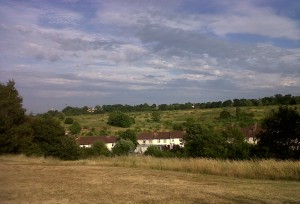The Greater London Assembly Environment Committee is seeking evidence on the environmental pressures of London’s growth, focussing on:
- Energy supply, demand and distribution
- Water management
- Green infrastructure
Deadline Friday 18th September.
For details see:
There are already several examples of the negative consequences of this in Bexley. These include:
- Bexley Council agreeing it will have to bin the ‘Core Strategy’ (its central strategic planning document) because it has decided to jack the proposed house building target for the next 15 years from the 4,500 agreed only 4 years ago to 22,000, which suggests a 20% increase in the Borough’s total population over the 2011 census.
- Allied with this is the rest of the Council’s 20th century ‘Growth’ strategy, laughably called a ‘vision’. We are told its supporters are the people we should trust to deliver this bright new future without destroying the things we value (and these are not spelt out, of course). There is no plan to tackle resource consumption so that this major population hike does not deliver a net increase, despite the UK signing an international treaty to get usage within sustainable limits by 2020 in order to preserve biodiversity, and the core strategy being riddled with the word ‘sustainable’. What they really mean, of course, is ‘sustained development’.
- Support for a Belvedere road bridge over the Thames and what is tantamount to support for another at Gallions Reach, both of which will pour traffic into Bexley despite this blindingly obvious problem being the reason the Council objected to the previous bridge proposal.
- Open space sell-off plans, now explicitly linked to the Council’s ‘growth’ agenda, which is also in part responsible for the more than 18 month hold up in approving the Sites of Importance for Nature Conservation review.
- The refusal to countenance turning over brownfield adjacent to Erith Marshes to nature conservation use, so as to deliver a modest increase in size for this SINC of London importance, despite allowing erosion elsewhere in the shape of the Veridion Park development, and knowing that a big chunk of Crayford Marshes SINC still has a ‘development’ axe hanging over it.
- Unanimously approving building on nearly three quarters of the Erith Quarry Grade 1 SINC, with ‘mitigation’ limited to leaving a strip of woodland (which was already protected by saved UDP policies), and a small fragment in one corner, which is too small for the density of reptiles already found on the site. No attempt is being made to try and make up for this major loss of important scrub habitat by changing management regimes at other sites of lower wildlife value or by utilising other brownfield land.

This fabulous view from Hollyhill across to Erith Quarry will soon be ruined by a major ‘development’. The ‘developer’s’ glossy document about impact on views avoided showing any of the several panoramic ones and just gave the impression trees blocked any decent vista. (Photo: Chris Rose)
Frankly, this is all stable door after the horse has bolted stuff from the committee, given the lack of opposition to Boris’s overt support for increasing London’s population from 8 to 11 million, lots more concrete and his associated ‘densification’ agenda, leavened as it is with pages of greenwash (because not legally enforceable) about ‘green infrastructure’.
Chris Rose
